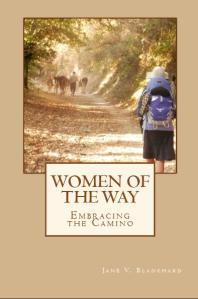
A Dramatic Construction review of
The Moon Coin by Richard Due
“… as you grow older, you’ll discover a curious thing about the truth – it plays by its own rules. It cares not one whit about your or anyone else’s beliefs. The truth just is. There is no stopping or changing it.” – Ebb Autumn.
When two very young children, Lily and Jasper, doubt that their toy figurines can really fly, they are looking at the items in their hands and basing this knowledge of what their eyes tell them. Their uncle, Ebb Autumn, cautions them to look a little deeper than this, however. What he tells them, warning them that the truth is not a matter of their beliefs, it is simply the truth, is what is at the heart of Plato’s dialogues when he discusses Truth.
The children see figurines, one of a dragon, one of a faerie. What they miss is the Form that each figurine represents. The Form is Dragon or Faerie, and the Form can very much fly. This Form is what makes it possible for the figurines to even exist. They are mere representations of a corresponding Form and if they truly participate in that Form, then like the Dragon and Faerie, when released, they can take flight.
And they can because they are small mechanical, nearly magical, creations of a rather eccentric genius by the name of Ebb.
That I can pull a discussion of Plato’s Theory of Forms from a story for young readers should tell you exactly what I think of this book. If the reader for a moment suspects that middle grade fiction should consist of simple tales with an eye to marketing toys, the first two pages of the prologue will set them straight.
The Moon Coin works on many levels. The diction is smooth and stylized. The mood shifts throughout the narrative, one moment light, then next dramatic – much like the moods of young teenagers. The pace is so quick that you move through these changes with the characters, feeling those changes from mischief, to curiosity, to mortal danger very much the way the characters themselves feel them.
All of this is good and in and of itself a reason to recommend the book. If I did not look at one more thing, however, I would be remiss.
Opsis
Opsis is a fine Greek work for “appearance” or “view”. In Poetics, Aristotle discusses Opsis, but you get the sense he does not really care for it. Opsis is the spectacle – costume, set, and appearance – of a play. For Aristotle, it deserves some consideration, but it is hardly what matters. Spectacle can be great, but if the acting is bad, if the plot is not solid, if the chorus, thought, or diction are off, then it does not matter. The play may be successful, but it is not a good thing.
Aristotle would not be fun to take to modern movies.
He is not wrong. Without the fundamental components of a good fiction – plot, character, conflict – all the spectacle in the world will not make a story good. It is great that you can bring someone into the heart of the Louisiana bayou, but if you cannot create characters that the reader feels or a plot that compels them to turn the page, you might as well write a travel book.
Since I covered before that yes, The Moon Coin has these other elements working for it, I think Aristotle will forgive me the extra moment to highlight the spectacle.
The Moon Coin does not shortchange the reader here. Costuming? Try Ebb’s many-pocketed coat on for size – pockets that seem to hide things of their own accord. Props, perhaps? Might I suggest the tiny mechanical sea horse leading tiny birdfish on a mad chase around the house. Perhaps a gold chain with intricate etchings on its face, each so detailed as to take up the page of a sketch pad.
What truly caught my imagination, however, were the moons. The different celestial bodies of the Moon Realm float around their sun and come so close that the tips of the tallest trees can brush up against each other. And before you can adjust your glasses and say “but the gravity of the moons would cause tidal upheaval” or some such, the quick pace of Due’s storytelling moves you onto the next thing.
Then you remember something.
You remember what it is to just imagine – to lay on the grass, hold your feet up to the moon, and pretend that you can walk on it. The Moon Coin contains all the wonder of imagination from moons that wander perilously close together to wind-up toys that behave as though alive. Due brings them all together in a well-written fast-paced tale with grand scope and ingratiating characters.
About the Stories
You can find The Moon Coin series on Amazon.
You can also visit the Moon Realms.
Literary Theory
Plato
Poetics
Opsis
 A Post Colonial analysis of
A Post Colonial analysis of






